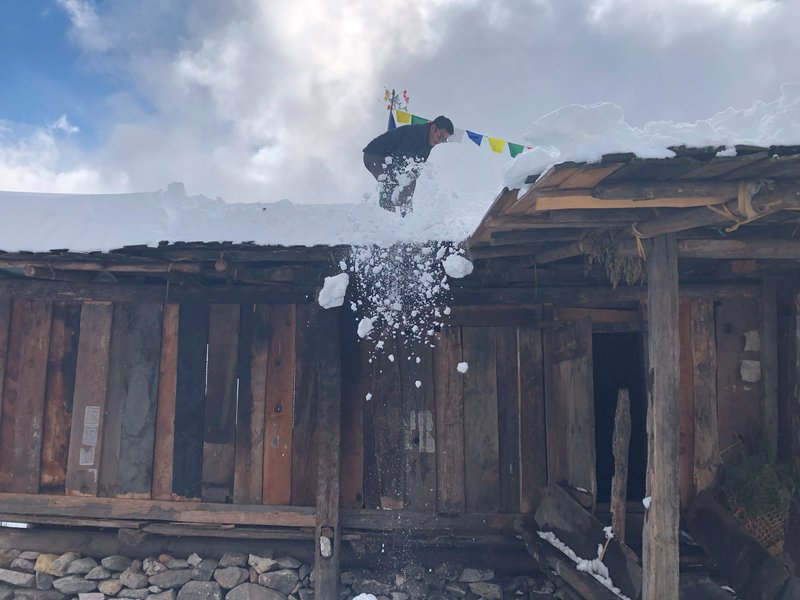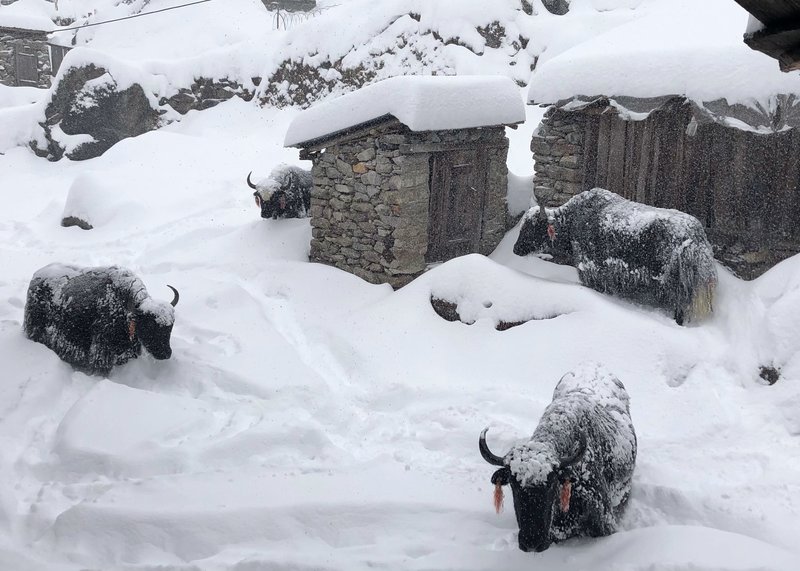Dr Alice Millington: Warming Climates and Changing Times in the Eastern Himalayas
In late October 2021, the Mechi Highway in far eastern Nepal collapsed after weeks of incessant rain. Although the event produced no casualties, its timing was less than ideal. In the following days, I was due to begin a period of ethnographic fieldwork with Himalayan traders and yak herders, and this landslide promised an indeterminate roadblock. As I fretted restlessly in Kathmandu – my plans had already been delayed by a year due to the COVID pandemic – residents in the Nepali capital frowned when I mentioned the ruined road in the eastern province. “Our highways collapse [due to landslides] every summer,” one urbanite commented, “But this year, it seems the rains are late.”
In fact, until recent years, nearly all landslide activity in Nepal was confined to the months of June – September, linked to the predictable rainstorms of the Indian monsoon. The collapsed highway – an event that would have seemed commonplace earlier in the year – seemed somehow ‘out of time’ in this late October setting. By the beginning of November, I finally reached the village of Walung (Olangchung Gola), a culturally Tibetan settlement situated at the foothills of the world’s third highest mountain, Mount Kanchenjunga (8,586m). The objective was to investigate local perceptions of climate change in a region warming faster than anywhere on Earth outside the North and South Poles.
Over sixty interviews conducted over the following months, residents shared with me how the climate had been changing in Walung in recent decades. To someone unaccustomed to the Himalayan seasons, some observations made little sense to me at first. As the mercury progressively dipped, and winter arrived, I would wake up to my water bottle frozen solid on the floorboards beside my bed – yet older generations complained of feeling warm in the day; the intensity of heat during bouts of midday sunshine was uncomfortable.
Soon after my November arrival, the village’s yak herders went on ‘snow watch’, where they scoured the sky for signs of an oncoming snowstorm using traditional indicators like the guzig – a wispy rope of cloud stretched between the stars – alongside the appearance of red clouds, or sightings of the ‘snowbird’. If herders could predict the onset of a blizzard, they could corral their animals in advance and give them fodder to survive the smothering of grasslands that makes grazing impossible. But after months of nightly vigilance, it looked like the snow would never come.

When the snow finally arrived in the last days of December – nearly twelve weeks later than older generations remembered from their childhood – it was the heaviest that the village had seen in years. After the roof of a community building collapsed under the weight of the snow, residents took to their own rooftops to shift the drifts. This activity, older residents recalled, used to be completed six or seven times in a winter. But this was the first time it had been necessary for years. And the night before, not a hint of an indication of on oncoming blizzard was visible – either on the Tibetan almanac, once capable of predicting snowfall with 63% accuracy, nor in the appearance of the clouds, the stars or the birds. Because of this, the yaks were scattered across the high reaches of the valley rather than safe in the village, and several perished in avalanches.

We survived the snowfall and the plummeting temperatures without further calamity, but shortly after spring arrived, every morning brought sheets of rain, a skyline more typical of the monsoon in summer. Residents eyed the swelling river with alarm, fearful of landslides or flash floods, as had happened during an enormous glacial lake outburst that destroyed half of the village in 1963. They were used to this anxiety during the monsoon, they explained, but rarely had this concern been a springtime affair. By the time I left the village, in late May 2022, all these ‘missed cues’ – the late October landslide, the delayed snowfall, the debut of heavy spring rainfall – which ultimately signified the loss of weather predictability that residents had formerly relied upon – had all begun to coalesce into a picture of temporal incoherence, rather than a narrative of adverse weather.
One of the major conclusions of this ethnographic work was that climate change is not just a question of altered weather, but of altered time, and timing. In regions where livelihoods depend on the assured progression of a seasonal cycle, when weather events happen is just as important as what weather events happen. However, studies from across the Himalayan region have demonstrated that phenological (seasonal) indicators are experiencing runaway change in response to the warming climate. Under these conditions, time itself – and the indicators that register it – is no longer a coherent whole. For instance, plant blossoming dates tend to be determined by temperature, but bird migrations use seasonal changes in light as their cue. This has given rise to ‘timing mismatches’ amongst species that have symbiotic relations: they may appear in the right place, but at the wrong times. If these systems are no longer predictably coupled because of changes to climate, any system that relies on relationships is in jeopardy.
During my time in Walung, residents reported more than 46 discrete manifestations of climate change that they had witnessed in their own lifetimes. The practical implications of these caused concern. But what was lying beneath the surface was a deeper sense of unease about the changing times – a term that communicates much more than a social metaphor, but a very real jolt to a sensation that we often take for granted: our innate sense of temporality. The mosaic of species in the area: migratory birds, the blooming of rhododendrons, the dormant periods of grass growth on the yak rangelands, are the time-makers of the Himalayan region, and if their annual timings fall out of synchronicity with each other because of climate change, time itself is unpicked at the seams. The result is absolute disorientation for both pastoralists and the nonhuman species they cohabit with.
Moving forward, some critical questions that I plan to explore during my Career Development Research Fellowship include: how are multispecies migrations implicated in the localised timekeeping practices of Himalayan pastoralists? What other seasonal time-narratives exist across the Himalayas and which species do they implicate? Above all, how are these time systems vulnerable to ongoing climate change? If these questions can be better answered in future fieldwork, the goal is to develop a multispecies exploration of timekeeping in the Eastern Himalayas.
Dr Millington's research profile, along with a list of her publications, can be found here.
